The magical district of Rome: Coppedè
Italian Version Below*
When I left my small town in Campania, many years ago, to continue my studies in Rome, I lived for a long time just a few meters from this fantastic place.
It’s really incredible, I smile every time, just saying his name: Coppedè.
I do not know how many times I have passed by here, at all hours of the day and night and I am promptly excited.
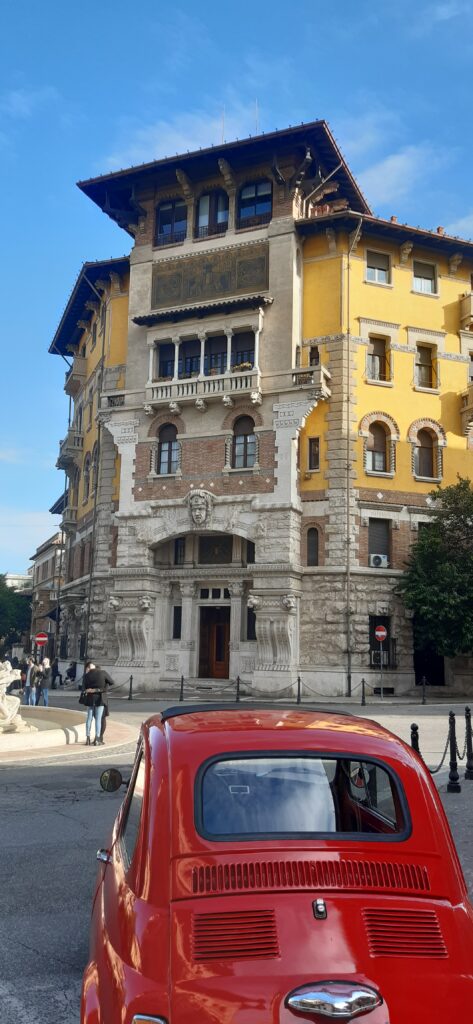
Coppedè is one of the most characteristic places in Rome, a complex of buildings, in the Trieste district.
It occupies an area of 31,000 square meters, near Viale Regina Margherita and to be precise in the area where the avenue intersects with Via Po at today’s Piazza Buenos Aires.
The district binds its name to the architect who conceived the project, Gino Coppedè, a Florentine born in 1866.
The works started in 1917, due to the First World War, continued slowly. The original nucleus of the district, albeit with changes compared to the original project, was completed in 1927, the year of Coppedè’s death.
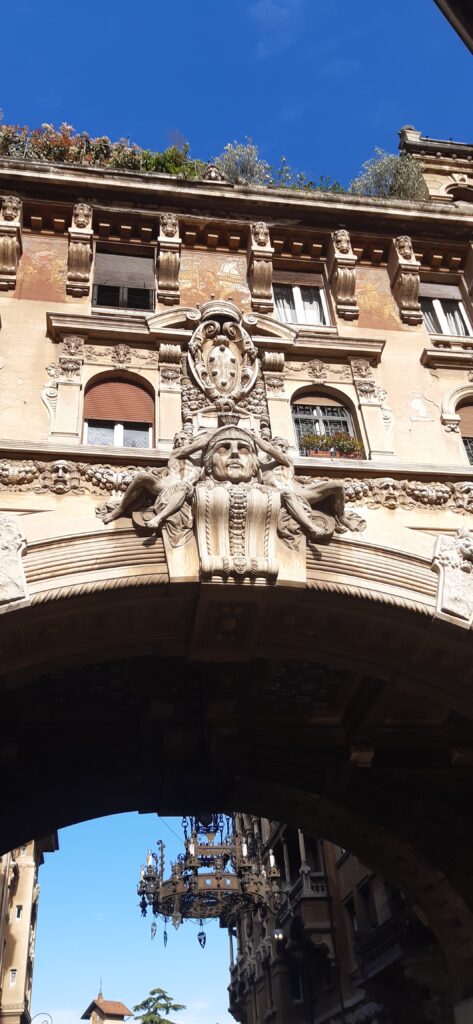
The most impressive part of the district, which was already finished in 1921, is the one known as the “Palazzi degli Ambasciatori”, which takes its name from the first illustrious buyers.
Gino Coppedè with his family will also live here, on the side of Via Doria 2. The arch, a clear reference to the Roman triumphal arches, here in an Art Nouveau key, becomes the monumental entrance to the entire district.
The passage under the arch is dominated by a majestic and unexpected wrought iron chandelier.
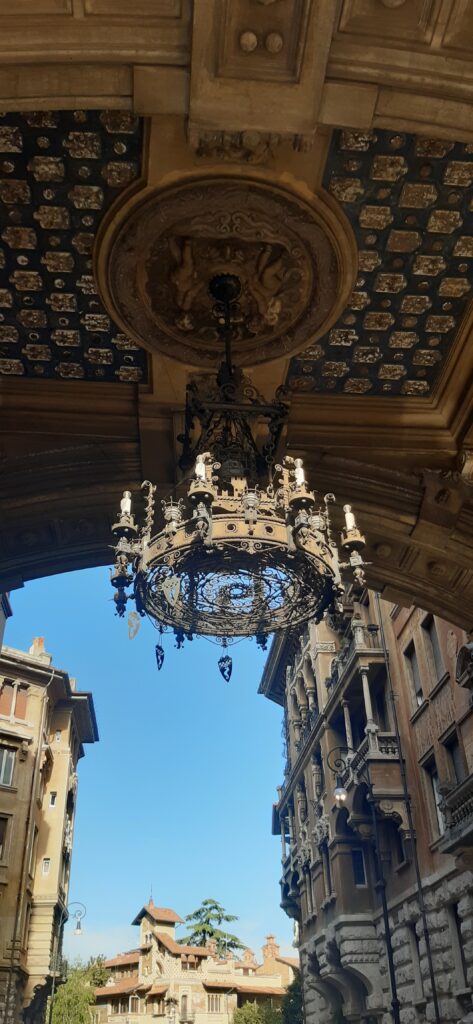
The beating heart of the neighborhood is Piazza Mincio with the unmistakable Fountain of the Frogs. The fountain was built in its central body entirely in concrete, a material not frequently used for this type of construction in Rome at that time.
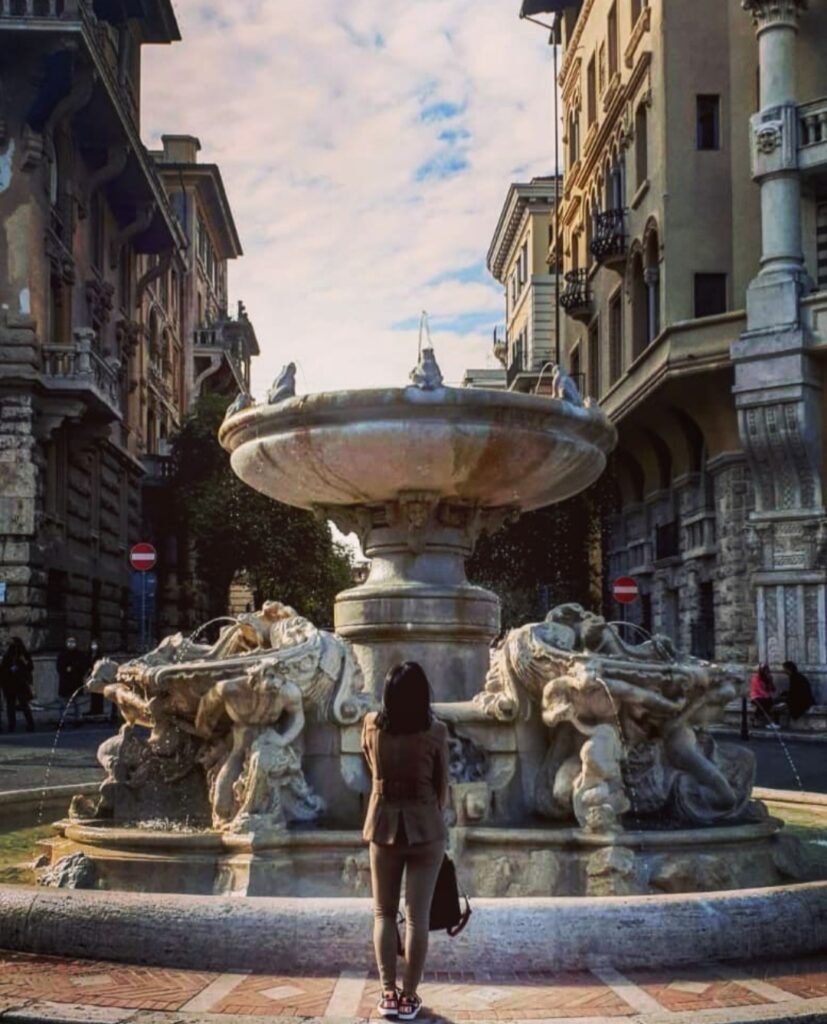
The chronicles tell that not even the Beatles, resisted the charm of the neighborhood and the fountain, plunged into it after a concert at the Piper.
Looking around we have the Palazzo del Ragno and the little Houses of the Fairies which, after a long period of neglect, were bought by a private company in the early 2000s.
Coppedè will appear to you as a riot of styles and strange symbols. You will happen to see stylized trees, eagles, bees, rams, dogs, knights, crowns, lizards and cornucopias… I’ll stop here, now it’s up to you to find out the rest!
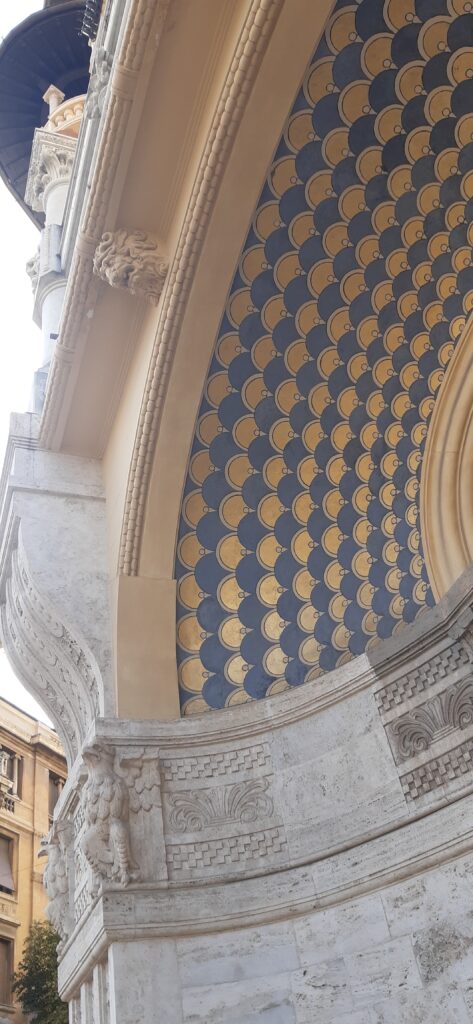
When you visit Rome, don’t forget to leave the center every now and then for this kind of more secluded but impactful experience!
Follow me on IG/FB: selenia_eyonart
All rights reserved*
Quando ho lasciato il mio piccolo paese in Campania, tanti anni fa, per continuare i miei studi a Roma, ho vissuto per un lungo periodo a pochi metri da questo fantastico luogo.
E’ davvero incredibile, sorrido ogni volta, solo nel pronunciare il suo nome: Coppedè.

Non so quante volte io sia passata di qui, a tutte le ore del giorno e della notte e puntualmente mi sono emozionata.
Coppedè è uno dei luoghi più caratteristici di Roma, un complesso di edifici, nel quartiere Trieste.
Occupa un’area di 31.000mq, nei pressi di Viale Regina Margherita e per la precisione nella zona in cui il viale si incrocia con Via Po presso l’odierna Piazza Buenos Aires.
Il quartiere lega il suo nome all’architetto che ha ideato il progetto, Gino Coppedè, fiorentino classe 1866.
I lavori iniziati nel 1917, a causa del primo conflitto mondiale, sono proseguiti lentamente. Il nucleo originario del quartiere, seppur con modifiche, rispetto al progetto originale, è completato nel 1927 anno della morte di Coppedè.

La parte più imponente del quartiere, terminata già nel 1921 è quella detta “dei Palazzi degli Ambasciatori”, che prende il nome dai primi acquirenti illustri.
Anche Gino Coppedè con la sua famiglia abiterà qui, nel lato di Via Doria n.2. L’arcone, chiaro richiamo agli archi trionfali romani, qui in chiave Liberty, diventa l’ingresso monumentale dell’intero quartiere.
Il passaggio sotto l’arco è dominato da un maestoso quanto inaspettato lampadario in ferro battuto.

Cuore pulsante del quartiere è Piazza Mincio con l’inconfondibile Fontana delle Rane. La fontana fu realizzata nel suo corpo centrale interamente in cemento, materiale non utilizzato frequentemente per questo tipo di realizzazioni a Roma in quel periodo.

Raccontano le cronache che neanche i Beatles, resistettero al fascino del quartiere e della fontana, in essa si tuffarono dopo un concerto al Piper.
Guardando intorno abbiamo il Palazzo detto del Ragno ed i Villini delle Fate che dopo un lungo periodo di abbandono sono stati acquistati da una società privata nei primi anni del Duemila.
Coppedè vi apparirà come un tripudio di stili e di strane simbologie. Vi capiterà di scorgere alberi stilizzati, aquile, api, arieti, cani, cavalieri, corone, lucertole e cornucopie… mi fermo qui, adesso tocca a voi scoprire il resto!

Quando visitate Roma, non dimenticate di lasciare ogni tanto il centro per questo tipo di esperienze più defilate ma di impatto!
Sostieni la cultura che vince, aiuta la condivisione.
Segui le mie pagine IG/ FB: selenia_eyeonart
Tutti i diritti sono riservati. E’ vietata qualsiasi utilizzazione, totale o parziale, dei contenuti inseriti nel presente portale, ivi inclusa la memorizzazione, riproduzione, rielaborazione, diffusione o distribuzione dei contenuti stessi mediante qualunque piattaforma tecnologica, supporto o rete telematica, senza previa autorizzazione scritta di Selenia Morgillo.